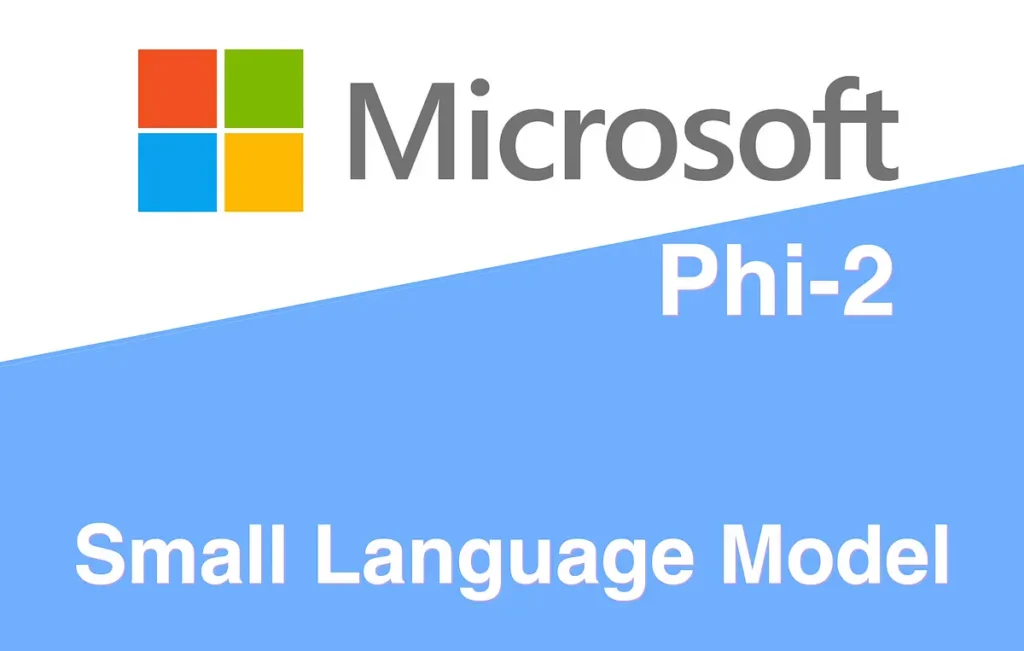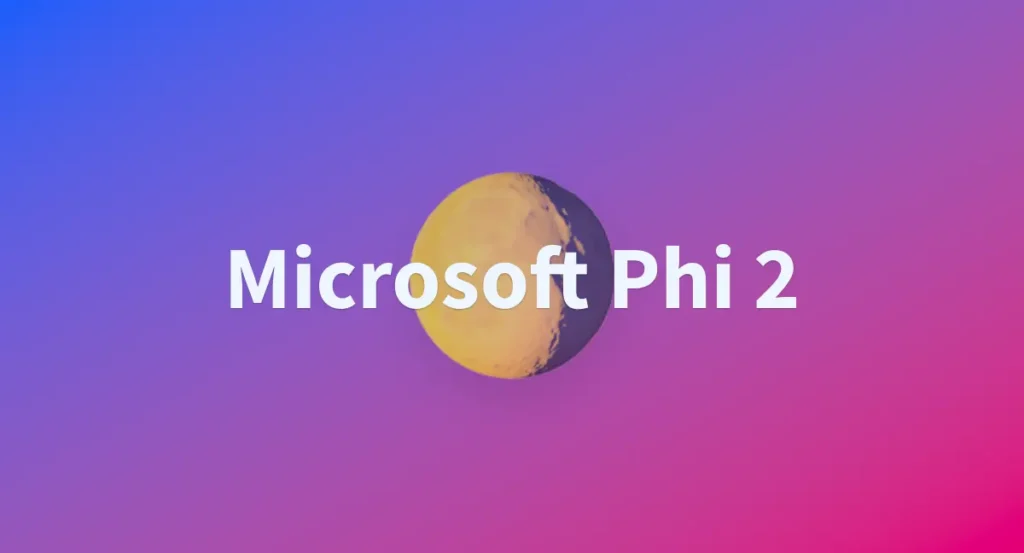Microsoft Phi-2 API, succinctly described, offers a seamless interface for integrating advanced natural language processing capabilities into diverse applications.

Defining the Essence of Microsoft Phi-2
At its core, Microsoft Phi-2 is a 2.7-billion-parameter transformer-based language model designed to excel in tasks such as text generation, reasoning, and code understanding. Unlike its predecessors or larger contemporaries, Phi-2 prioritizes efficiency without sacrificing performance quality. Available through platforms like Hugging Face and Azure AI, it caters to a broad audience seeking robust AI solutions with minimal computational overhead. The Microsoft Phi-2 API empowers developers by providing a straightforward endpoint to harness its language processing prowess, making it an accessible yet powerful tool for real-world deployment.
Phi-2’s design philosophy centers on “smaller is smarter,” leveraging innovative training techniques to achieve results that rival models ten times its size. This balance of compactness and capability positions it as a cornerstone for scalable AI adoption.
The Evolutionary Journey of Microsoft Phi-2
The development of Microsoft Phi-2 reflects a strategic evolution within Microsoft’s AI research lineage. Building on the foundation laid by Phi-1 and Phi-1.5—earlier models focused on reasoning and mathematical proficiency—Phi-2 integrates lessons from these iterations to broaden its scope. Launched in December 2023, it emerged from a concerted effort to optimize small language models (SLMs) for practical use, driven by Microsoft’s commitment to advancing AI efficiency.
Key to its evolution is the incorporation of high-quality synthetic datasets and curated training corpora, enabling Phi-2 to outperform its predecessors in natural language understanding and generation. This iterative refinement, paired with community feedback via open-access platforms, underscores its trajectory as a model tailored for both innovation and accessibility.
Technical Architecture and Performance Indicators
The technical foundation of Microsoft Phi-2 is rooted in a transformer architecture, meticulously optimized for its 2.7 billion parameters. This design leverages advanced techniques such as knowledge distillation and efficient attention mechanisms to maximize output quality within a constrained size. Notable technical indicators include:
- Inference Speed: Achieves sub-second latency on standard hardware, ideal for real-time applications.
- Memory Footprint: Requires approximately 5 GB of RAM, facilitating deployment on edge devices.
- Perplexity: Scores competitively on benchmarks like LAMBADA, indicating strong language modeling capabilities.
- Task Accuracy: Excels in reasoning tasks, with performance metrics approaching those of models like LLaMA 13B.
These metrics highlight Phi-2’s ability to deliver high-efficiency results, making it a standout in the realm of small language models as of March 10, 2025.
Advantages of Microsoft Phi-2 for Diverse Users
The strengths of Microsoft Phi-2 lie in its unique blend of efficiency, performance, and accessibility. Its small size translates to lower computational requirements, enabling deployment on resource-limited environments like mobile devices or low-power servers—an advantage over bloated models like GPT-4. This cost-effectiveness appeals to startups, educators, and independent developers seeking enterprise-grade AI without enterprise-scale infrastructure.
Moreover, Phi-2’s open availability through Hugging Face and Azure fosters customization, allowing users to fine-tune it for domain-specific tasks. Its proficiency in reasoning and code-related applications further enhances its utility, positioning it as a versatile asset across industries.
Integration with Development Ecosystems
Microsoft Phi-2 seamlessly integrates into modern development workflows, thanks to its compatibility with widely used frameworks. The Microsoft Phi-2 API, accessible via Azure AI, simplifies integration into cloud-based applications, while local deployment is supported through PyTorch and ONNX compatibility. Pre-trained weights on Hugging Face enable rapid prototyping, reducing the barrier to entry for AI experimentation.
Additionally, Phi-2 benefits from Microsoft’s broader AI ecosystem, including tools like Azure Machine Learning, which streamline model optimization and scaling. This interconnectedness ensures that users can leverage Phi-2 within a robust, supportive infrastructure.
Application Scenarios for Microsoft Phi-2
The versatility of Microsoft Phi-2 shines through its diverse application scenarios, catering to both technical and creative needs. Below are key domains where it excels:
Educational Tools and Tutoring
Educators harness Phi-2 to develop intelligent tutoring systems, leveraging its reasoning capabilities to explain complex concepts or generate practice questions. Its lightweight nature ensures accessibility in classroom settings with limited hardware.
Code Generation and Assistance
Developers utilize Phi-2 for code synthesis and debugging, capitalizing on its understanding of programming languages. From generating snippets to explaining algorithms, it serves as a reliable assistant for software engineers.
Content Creation and Automation
Writers and marketers employ Phi-2 to produce high-quality content, such as articles, summaries, or social media posts. Its efficiency supports rapid iteration, enhancing productivity in fast-paced environments.
Edge Computing and IoT
In IoT ecosystems, Phi-2 powers real-time language processing on edge devices, enabling smart assistants or automated customer support without reliance on cloud connectivity. Its small footprint is a game-changer for such deployments.
These use cases illustrate Phi-2’s role as a practical AI solution, bridging technical innovation with tangible outcomes.
Related topics:Best 3 AI Music Generation Models of 2025
Performance Benchmarks and Comparative Analysis
Benchmarking solidifies Microsoft Phi-2’s reputation as a leader among small language models. On standard NLP tasks—such as HellaSwag, PIQA, and BoolQ—it achieves scores comparable to models like LLaMA 7B and 13B, despite its smaller size. Specific highlights include:
- Reasoning Tasks: Outperforms Phi-1.5 by 10-15% on mathematical and logical benchmarks.
- Text Generation: Matches coherence levels of larger models, with reduced hallucination rates.
- Efficiency Metrics: Consumes 50-70% less power than competitors like GPT-3.5 during inference.
These results underscore Phi-2’s ability to deliver top-tier performance within a compact framework, setting it apart in the AI landscape.

Getting Started with Microsoft Phi-2
Adopting Microsoft Phi-2 is streamlined for users of all levels. Developers can access pre-trained models via Hugging Face or deploy through Azure AI, with comprehensive documentation provided by Microsoft Research. A typical setup involves installing dependencies like Transformers and PyTorch, followed by loading the model weights—a process achievable in under an hour.
For cloud-based solutions, the Microsoft Phi-2 API offers plug-and-play integration, complete with SDKs for Python, JavaScript, and more. This accessibility ensures that Phi-2 is a practical choice for rapid deployment and experimentation.
Future Prospects and Community Contributions
The future of Microsoft Phi-2 is bright, with potential enhancements on the horizon. Microsoft’s ongoing research into SLMs suggests that Phi-2 could evolve to incorporate multimodal capabilities or further efficiency gains. Its open-access model encourages community contributions, fostering a collaborative environment where innovation thrives.
As adoption grows, Phi-2 is likely to influence trends in sustainable AI, emphasizing performance without excess resource consumption. This trajectory aligns with Microsoft’s broader mission to democratize AI technology.
Conclusion: A Compact Powerhouse in AI
In conclusion, Microsoft Phi-2 redefines the potential of small language models, offering a blend of efficiency, performance, and accessibility that resonates across industries. Its technical sophistication, evolutionary design, and practical applications cement its status as an authoritative tool in the AI domain as of March 10, 2025. Whether powering educational platforms, code assistants, or edge devices, Phi-2 exemplifies the future of scalable AI, proving that impactful innovation need not come at the cost of complexity.
How to call this Microsoft Phi-2 API from CometAPI
1.Log in to cometapi.com. If you are not our user yet, please register first
2.Get the access credential API key of the interface. Click “Add Token” at the API token in the personal center, get the token key: sk-xxxxx and submit.
3. Get the url of this site: https://api.cometapi.com/
4. Select Microsoft Phi-2 endpoint to send the API request and set the request body. The request method and request body are obtained from our website API doc. Our website also provides Apifox test for your convenience.
5. Process the API response to get the generated answer. After sending the API request, you will receive a JSON object containing the generated completion.


